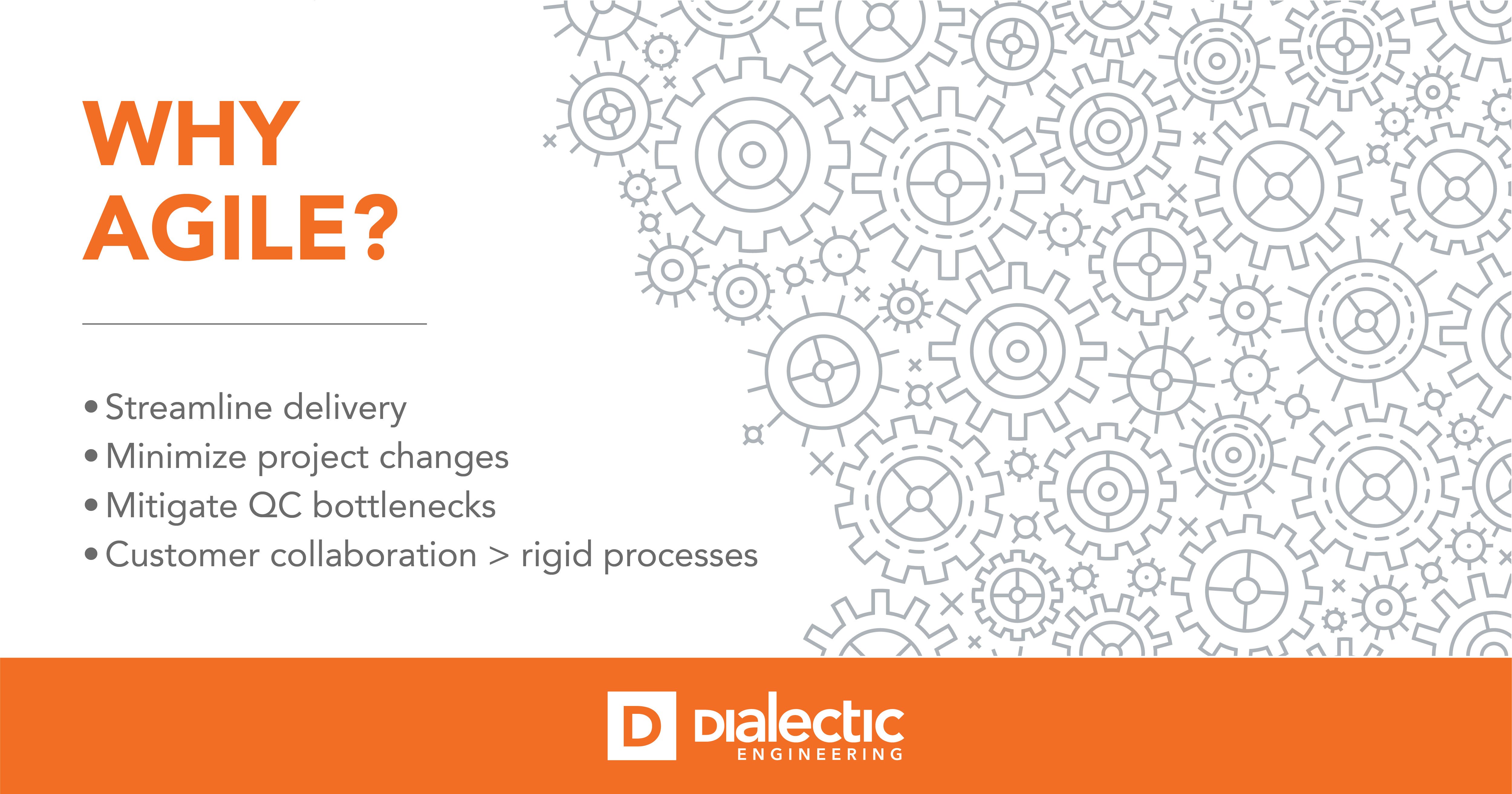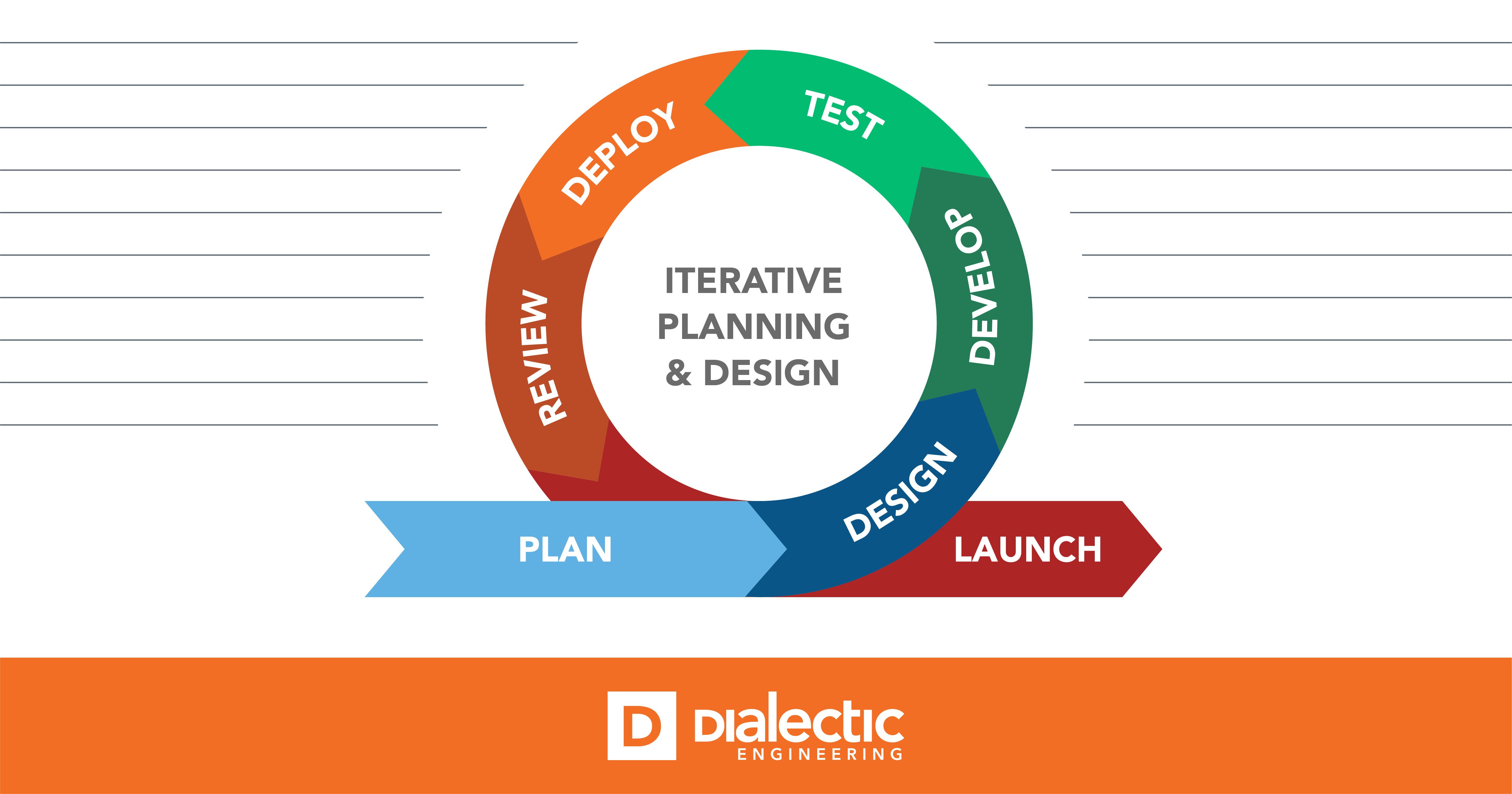3 min read
Building Bridges: Agile Collaboration Between Engineers & Architects
Dialectic Engineering
Dec 5, 2023 2:45:36 PM
.jpg)
At Dialectic Engineering, bringing innovative and functional structures to life is at the forefront of every project. So, when we determined that our own processes needed help, that same out-of-the-box thinking and creativity led us to a new way of collaboration, one that brings clients, architects and engineers to a level field.
To streamline delivery, Dialectic needed to find a way to minimize project changes. Like a lot of engineering firms, Dialectic’s processes included getting project information from the client or architect, then submitting a final product. However, in order to mitigate last-minute changes or reworks, the process needed an overhaul.
Leadership explored integrating the Agile method, which entails breaking a project up into manageable phases while receiving ongoing collaboration and input every step of the way. Often seen in software development and manufacturing, Agile methodology incorporates a cycle of planning, execution and evaluation.

At its core, Agile values individuals and interactions, working solutions, and customer collaboration over rigid processes and documentation.
Quality Control Process
It became apparent that while the work coming out of Dialectic was great, the internal process seemed to bottleneck when it came to quality control. The QC had been done the same way for a long time, and it worked … to a point. Resources were wasted and time was spent in the weeds on project changes.
The firm began to look for patterns to determine whether more training was needed or what needed to be done in order to minimize comments or changes made to projects during the internal QC process.
A Dialectic leader was sent to a Disney animation class, where he learned how the animators work using the Agile method within the company during a project. He came back with some really good ideas that could be implemented at Dialectic, including some terminology, like the idea of a movie premiere, that is still used in the QC process at the firm today.
Some consultants were brought into Dialectic from outside the industry to look at the processes and make suggestions. This is when the Agile process was launched at the firm.
Iterative Planning and Design
In the traditional construction process, architects create detailed plans, and engineers execute them step by step. However, Agile promotes iterative planning and design, encouraging continuous feedback and adjustments throughout the project. Architects and engineers can work closely together, regularly revisiting and refining plans based on evolving requirements and insights gained during the design development process.
This way of working emphasizes the importance of cross-functional teams, where individuals with different expertise collaborate seamlessly. In the realm of construction, this translates to architects and engineers working together from project initiation to completion. By breaking down silos and fostering open communication, both parties can better understand each other's constraints and possibilities, leading to more integrated and innovative solutions.

Regular Collaborative Meetings
Agile methodology promotes frequent and structured meetings to discuss progress, challenges and adjustments. Architects and engineers can hold regular sprint meetings or stand-ups to share updates, address issues and align their visions. This ongoing communication ensures that any changes in design or execution are promptly addressed, preventing bottlenecks and reducing the likelihood of misunderstandings.
At the beginning of implementation, Dialectic struggled to find partner firms in the industry willing to participate in this process. The ongoing collaboration required just that: participation from all parties involved. Those not used to constant communication and feedback were hesitant to make the switch. Eventually, some caught on, and the Agile method proved to be beneficial, from a financial standpoint, for efficiency, and in the workflow of a project.
Embracing Change
One of the fundamental principles of Agile is its adaptability to change. Construction projects often encounter unexpected challenges, and Agile provides a framework for architects and engineers to respond to these changes swiftly. By maintaining open lines of communication and a willingness to adjust plans, when necessary, collaboration becomes more resilient and responsive to the evolving needs of the project.
Agile methodology places a strong emphasis on delivering value to the end-user. In the context of construction, this means architects and engineers must align their efforts with the ultimate goals and expectations of the project's stakeholders. By regularly involving clients and end-users in the decision-making process, collaborative efforts are then focused on creating spaces that truly meet their needs.
In the intricate dance between engineers and architects, Agile methodology offers a harmonious framework for collaboration. By embracing iterative planning, forming cross-functional teams, holding regular collaborative meetings, adapting to change, and maintaining a user-centric approach, these professionals can create a synergy that elevates the quality and efficiency of construction projects.
As the construction industry continues to evolve, the application of Agile principles in the collaboration between engineers and architects will undoubtedly contribute to the creation of more resilient, innovative, and user-friendly building solutions.
At the end of the day, we’re still working to improve our processes at Dialectic, and we are getting better all the time. It doesn’t work on every project all the time, we’ve learned, but on more complex ones, this has been transformational for our firm. The keys have been to communicate and have the flexibility to change.
Ready to learn more about how Dialectic’s Agile method can help your next project? Contact us today.

